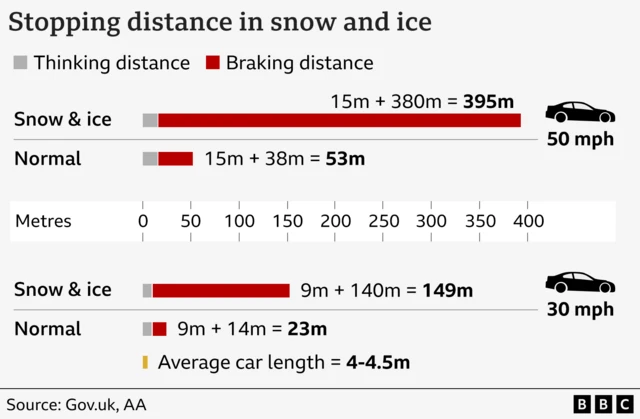10:59 GMT
Jennifer Clarke
BBC News

Driving in severe winter weather can be difficult, and in very bad conditions you should avoid driving at all unless your journey is absolutely essential.
But if you do need to use your car in snowy or icy conditions, careful preparations can help.
Wear warm clothes and comfortable shoes. Pack a waterproof coat, hat, gloves, sturdy boots and a blanket to keep you warm in case you do get stuck or have to leave your car. You may also need sunglasses in bright weather.
Make sure you have a fully charged mobile, a torch and batteries, and any medication you need.
Carry a shovel to clear snow and some old bits of carpet, or cat litter, to put under the tyres if you get stuck.

Consider buying winter tyres, which offer extra grip, especially if you live in an area which regularly experiences snow.
Car batteries run down more quickly in winter. Take regular long journeys to keep yours running well, or consider using a trickle-charger, which is designed to stop your battery going flat.
